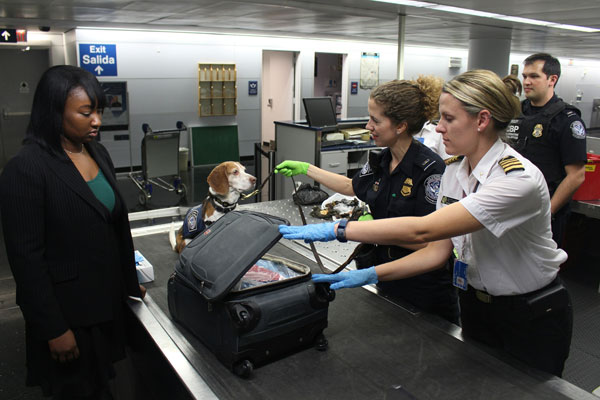DHS ends shoe-removal rule at U.S. airport security checkpoints

[Airport security. Photo credit to Unsplash]
The Department of Homeland Security (DHS) will no longer require travelers passing through Transportation Security Administration (TSA) checkpoints to remove their shoes, ending a practice that has lasted two decades.
DHS Secretary Kristi Noem announced the change on July 8 during a press conference at Ronald Reagan Washington National Airport.
She stated that passengers at all U.S. airports can keep their shoes on during security screenings, effective immediately.
Noem explained that this change was made possible by advances in security technology, allowing TSA to maintain safety standards while improving the convenience for fliers.
One of the most important upgrades is the use of Advanced Imaging Technology (AIT), which scans passengers for both metallic and non-metallic threats.
“As always, security maintains our top priority,” Noem said.
“We are confident we can implement this change while maintaining the highest security standards.”
She also pointed to new REAL ID requirements and the introduction of advanced facial recognition systems.
These tools verify passengers’ identification by comparing a live photo taken at the checkpoint with the photo on their government-issued ID, further strengthening the security framework.
The original shoe-removal regulation was first introduced in 2006 as a response to the 2001 failed terrorist attack by Richard Reid, infamously known as “the shoe bomber.”
Reid tried to detonate explosives hidden in his footwear on a flight from Paris to Miami.
The attempt was unsuccessful after passengers subdued him, but the incident prompted federal authorities to impose stricter security measures, including mandatory shoe removal.
Since then, all travelers except those under 12, over 75, or enrolled in TSA PreCheck program were required to take off their shoes in standard security lines.
Members of the PreCheck program were also permitted to keep on belts, light jackets, and shoes while using a dedicated lane.
Although the shoe-removal policy has been eliminated, TSA agents may still instruct passengers to remove footwear if additional screening is necessary or if an alarm is triggered during inspection.
Public reactions have been largely positive as travelers welcome the expected reduction in wait times.
Some, however, have expressed concerns about whether safety will be fully preserved under the new system.
Many travelers also said they hope this shift will open the door to further easing of airport security rules.
The end of the shoe-removal requirement comes alongside other policy updates.
TSA recently banned power banks in checked luggage and is testing new scanners that could allow travelers to bring liquid bottles in their carry-on bags.
Other standard protocols remain in force, including identity verification, Secure Flight vetting, and other layered checks.
TSA PreCheck will also continue to provide benefits such as dedicated lanes and exemptions from removing laptops and liquids at checkpoints.
According to Noem, the PreCheck program “still provides value by giving customers a faster, more efficient experience while maintaining security standards.”

- Mina Imai / Grade 10 Session 10
- Sunny Hills High School

![THE HERALD STUDENT REPORTERS [US]](/assets/images/logo_student_us.png)
![THE HERALD STUDENT REPORTERS [Canada]](/assets/images/logo_student_ca.png)
